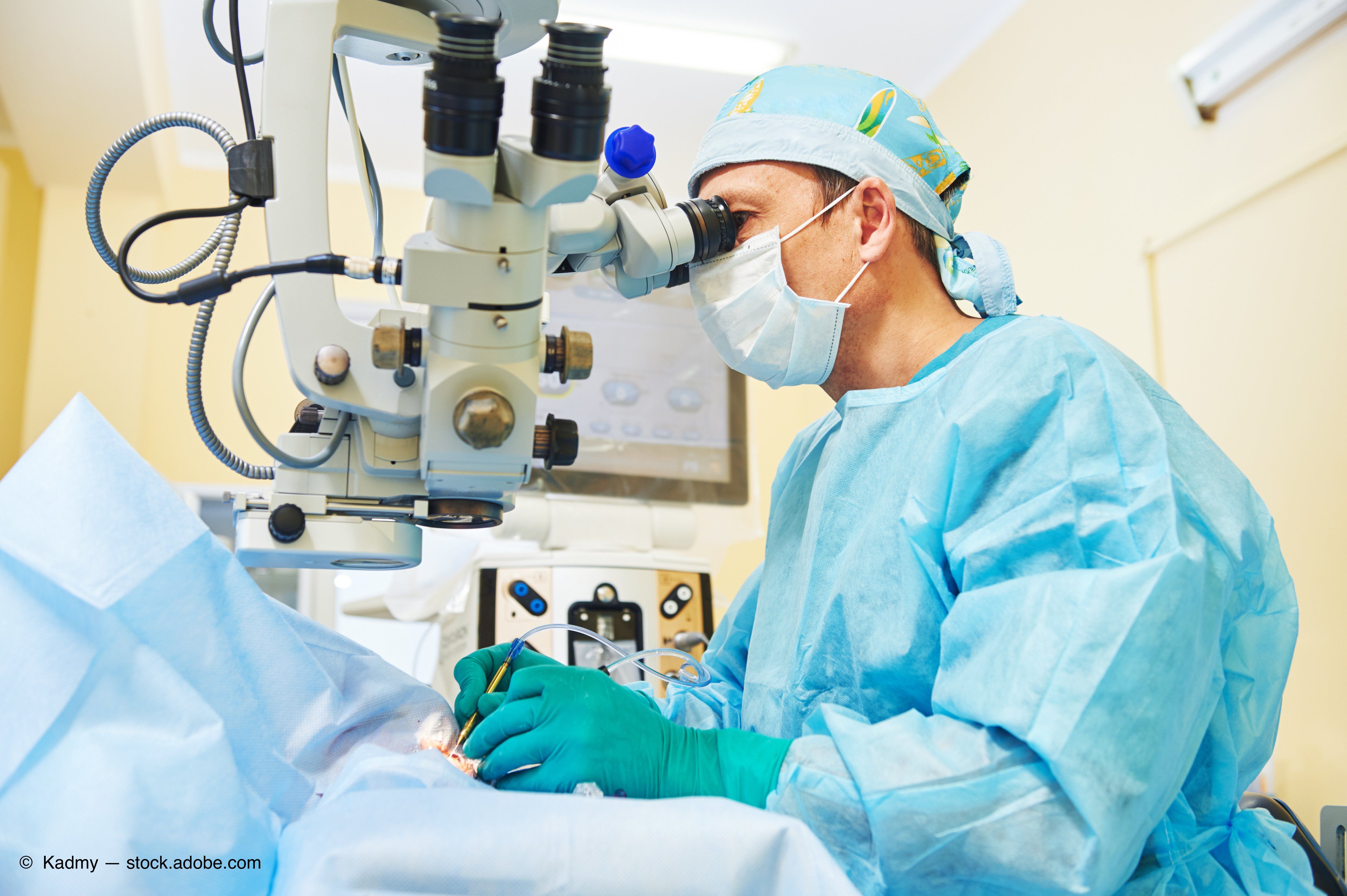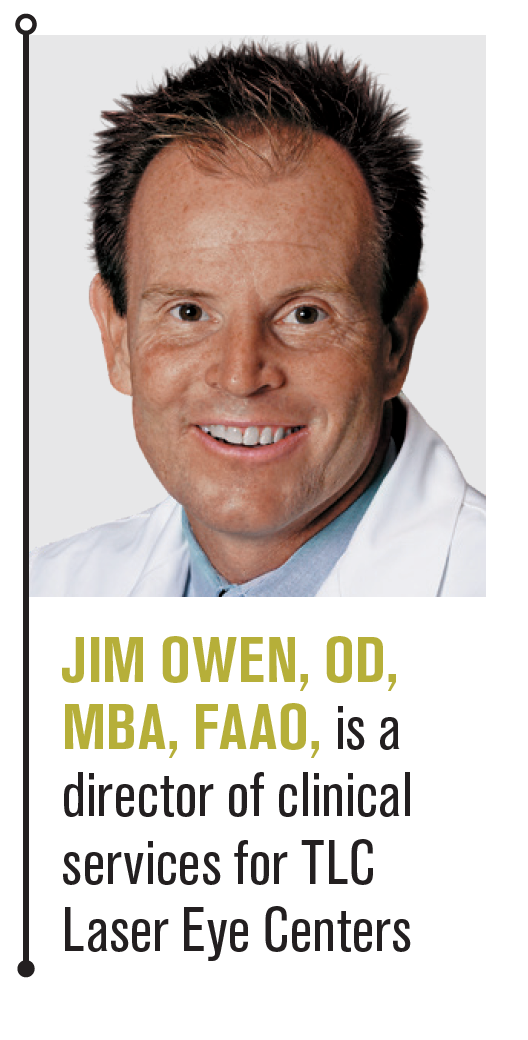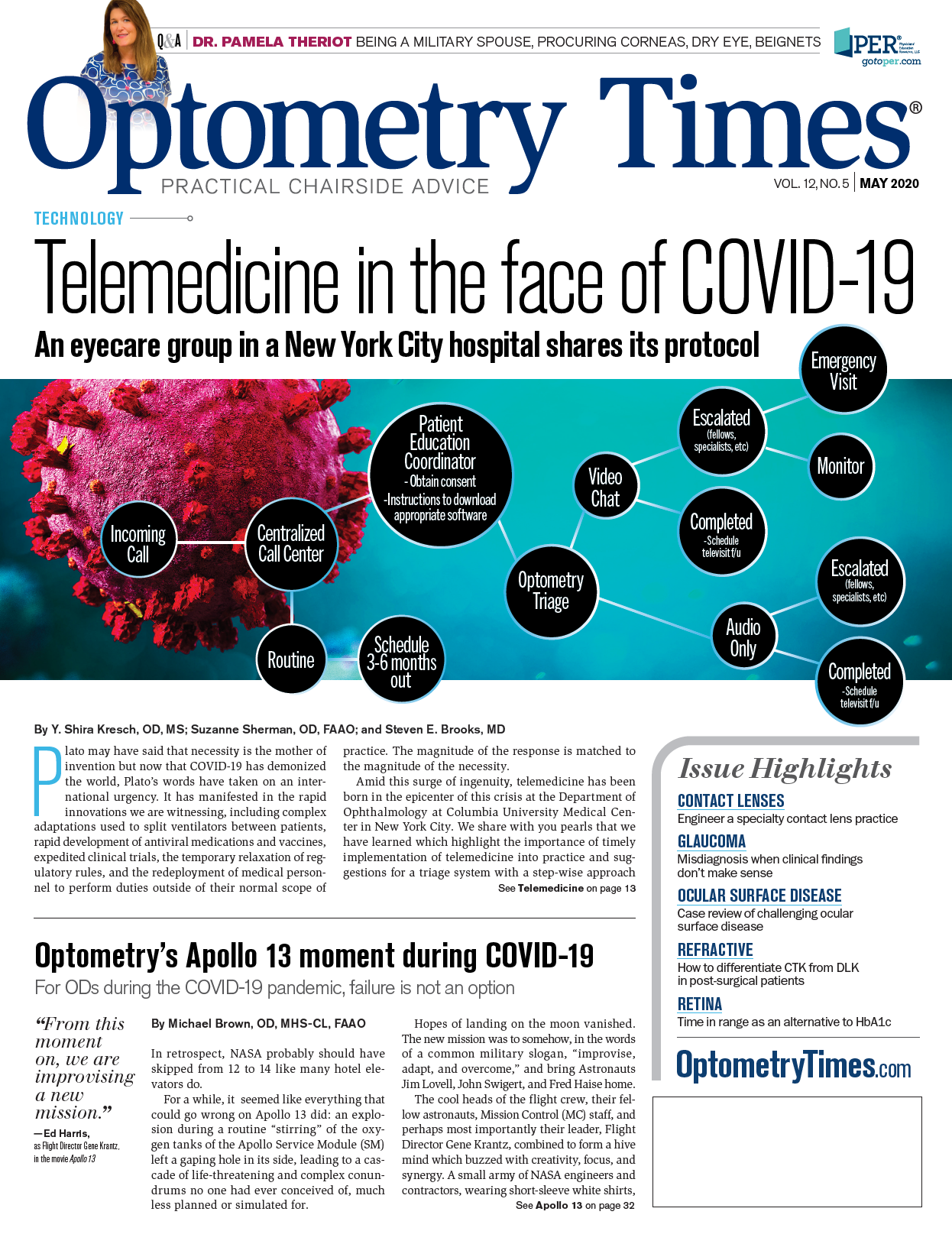How to differentiate CTK from DLK in post-surgical patients
Quick diagnosis leads to better outcomes and reduces long-steroid usage.


Although the cause is unknown, central toxic keratitis may occur after PRK or femtosecond laser-created flaps, within 3-9 days. DLK usually precedes CTK. Since CTK is noninflammatory, it’s important that ODs recognize it as soon as possible, to avoid unnecessary topical steroids.
Laser vision correction has progressed in many ways since its U.S. Food and Drug Administration (FDA) approval. The outcomes are improved, and the complications are reduced.1 Technology has made improvements in the ability to identify good candidates, and in the hands of a skilled surgeon patients are as happy as ever.
Therefore, it is interesting when ODs see complications that they do not completely understand, such as central toxic keratitis (CTK). The good news is that incidence is rare with studies estimating its occurrence from 0.0076 percent to 0.016 percent.2
Related: Refractive surgery in 2020: From minimally invasive LASIK to light adjustable lensesAbout CTK
Central toxic keratitis has occurred in laser-assisted in situ keratomileusis (LASIK), photorefractive keratectomy (PRK), corneal collagen cross-linking (CXL), and even contact lenses patients, but LASIK is the most common surgery leading to the condition.3
Interestingly, CTK has not been observed in enhancement procedures4-the thinking is the condition may be intrinsic to each individual. It is an acute, self-limited, non-inflammatory reaction of the central cornea. It usually appears on Day 3 to Day 9 after surgery but is often preceded by diffuse lamellar keratitis (DLK) on Day 1.3
Diagnosis
Differential diagnosis includes Grade 3 to Grade 4 DLK, pressure-induced stromal keratitis (PISK), and infectious keratitis. CTK often results in opacification of the central corneal along with a significant hyperopic shift in the patient’s refraction.5 Confounding early diagnosis of CTK is the fact that it is often preceded by DLK on postop Day 1 and Day 2, and the two have overlapping features.6
DLK is defined by infiltrative white cells at the interface of the LASIK flap. These infiltrative cells are diffuse in the central or peripheral flap interface and respond to increased topical steroids. DLK will typically resolve in 5 to 8 days and only rarely has any impact on the final refractive outcome.7
Related: Unlock the potential of refractive surgery
A clinical pearl of treating DLK in 2020 is identifying the specific steroid being used (anecdotally my colleagues and I have found generic prednisolone acetate has been less effective), make certain the patient is shaking the bottle vigorously prior to instilling the drop, and if I am still concerned, switch the patient to difluprednate ophthalmic emulsion (Durezol, Novartis). I have found that most Grade 1 and Grade 2 DLK patients are improved the following day by increasing the steroid from qid to q2h. If the patient is not improved the next day, contact the operating surgeon.
Several features delineate CTK from infectious keratitis. While central opacification and edema associated with the conditions can be similar, CTK eyes are white and quiet. There is no injection nor an anterior chamber reaction that often accompanies infectious keratitis. Inflammatory cells often surround the central opacification in infectious keratitis in a “fluffy” pattern that are not seen in CTK.
The cause of CTK is currently unknown.5 Theories include patients having a hypersensitivity to materials within the tear film that, when exposed to the excimer laser, results in apoptosis of keratocytes. There is a toxic reaction when these “substances” go though photoactivation by the laser. The keratocyte apoptosis has been documented by confocal microscopy and can affect the stroma on the posterior of the flap as well as in the corneal bed.
The rate of apoptosis appears to be greatest early in the the condition based on optical coherence tomography (OCT) images and pachymetry. Corneal thickness gradually returns because a proliferation of keratocytes and fibroblasts aid in reconstructing the stromal matrix. Therefore, treatment of CTK is controversial because steroids slow the proliferation of keratocytes and inflammatory mediators.
Related: Laser vision correction: Look backward to move forward
Diagnosis and treatment
CTK is preceded by or assumed to be DLK upon initial diagnosis. Conventional treatment for DLK is increasing the topical steroid, usually from qid to q2h.8 The patient should be seen the following day. When the condition worsens, the next step for DLK is lifting the flap and rinsing the interface with steroid. While the two conditions can appear similar under the slit lamp, often the Grade 3 to Grade 4 DLK patient will experience a foreign body sensation or ocular pain.9
Unfortunately, the diagnosis of CTK is made after the attempts of treating DLK have failed. Increased steroids, lifting the flap, and rinsing the stromal bed can have deleterious effects on the CTK patient. Steroids slow the proliferation of keratocytes and lifting the flap can increase the amount of tissue loss on the anterior stromal bed. This results in an increase in hyperopia and a thinning of the cornea.
Current thinking supports the use of steroids and lifting the flap because their adverse effects on CTK patients are less than the results of not treating an advanced DLK patient.
Recovery from CTK is 6 to 18 months with the central cornea gradually clearing and the anterior curvature steepening as the cornea thickens. This results in a reduction of hyperopia over time. Both oral doxycycline and topical vitamin E have been used to treat CTK, but neither has been studied.
CTK is a non-inflammatory self-limiting condition that can be a result of PRK or LASIK as well as other non-refractive procedures. Making the diagnosis that this condition is not DLK as soon as possible at minimum reduces the risk of long-term topical steroid use and may improve the long-term outcome of the patient. Of course, collaborating with operating surgeon is best for everyone.
Related: Comanaging intraocular lens power calculations
References:
1. Chua D, Htoon HM, Lim L, et al. Eighteen-year prospective audit of LASIK outcomes for myopia in 53 731 eyes. Br J Ophthalmol. 2019 Sep;103(9):1228-1234
2. Hainline BC, Price MO, Choi DM, Price FW. Central flap necrosis after LASIK with microkeratome and femtosecond laser created flaps. J Refract Surg. 2007 Mar;23(3):233-42.
3. Sonmez B, Maloney RK. Central toxic keratopathy: description of a syndrome in laser refractive surgery. Am J Ophthalmol. 2007 Mar;143(3):420-7.
4. Mari Cotino JF, Suriano MM, et al. Central toxic keratopathy: a clinical case series. Br J Ophthalmol. 2013 Jun;97(6):701-3.
5. Liu A, Maloney RK, Manche EE. Toxic peripheral kera-topathy: a syndrome in laser refractive surgery. J Cataract Refract Surg. 2012 Sep;38(9):1684-9.
6. Galal A, Artola A, et al. Interface corneal edema secondary to steroid-induced elevation of intraocular pressure simulating diffuse lamellar keratitis. J Refract Surg. 2006 May;22(5):441-7.
7. Linebarger EJ, et al. Diffuse lamellar keratitis: diagnosis and management. J Cataract Refract Surg. 2000 Jul;26(7):1072-7.
8. De Paula FH, Khairallah CG, et al. Diffuse lamellar keratitis after laser in situ keratomileusis with femtosecond laser flap creation. J Cataract Refract Surg. 2012 Jun;38(6):1014-1019.
9. Hau SC, Allan BD. In vivo confocal microscopy findings in central toxic keratopathy. J Cataract Refract Surg. 2012 Apr;38(4):710-2.

Newsletter
Want more insights like this? Subscribe to Optometry Times and get clinical pearls and practice tips delivered straight to your inbox.